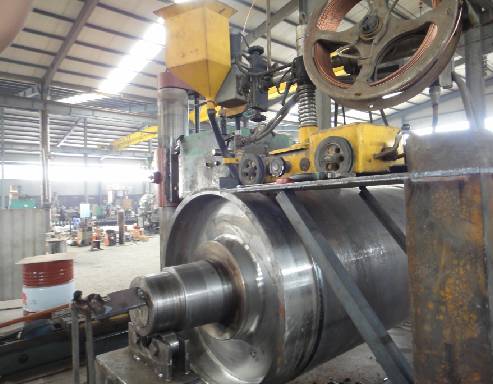 Afrikaans
Afrikaans  Albanian
Albanian  Amharic
Amharic  Arabic
Arabic  Armenian
Armenian  Azerbaijani
Azerbaijani  Basque
Basque  Belarusian
Belarusian  Bengali
Bengali  Bosnian
Bosnian  Bulgarian
Bulgarian  Catalan
Catalan  Cebuano
Cebuano  Corsican
Corsican  Croatian
Croatian  Czech
Czech  Danish
Danish  Dutch
Dutch  English
English  Esperanto
Esperanto  Estonian
Estonian  Finnish
Finnish  French
French  Frisian
Frisian  Galician
Galician  Georgian
Georgian  German
German  Greek
Greek  Gujarati
Gujarati  Haitian Creole
Haitian Creole  hausa
hausa  hawaiian
hawaiian  Hebrew
Hebrew  Hindi
Hindi  Miao
Miao  Hungarian
Hungarian  Icelandic
Icelandic  igbo
igbo  Indonesian
Indonesian  irish
irish  Italian
Italian  Japanese
Japanese  Javanese
Javanese  Kannada
Kannada  kazakh
kazakh  Khmer
Khmer  Rwandese
Rwandese  Korean
Korean  Kurdish
Kurdish  Kyrgyz
Kyrgyz  Lao
Lao  Latin
Latin  Latvian
Latvian  Lithuanian
Lithuanian  Luxembourgish
Luxembourgish  Macedonian
Macedonian  Malgashi
Malgashi  Malay
Malay  Malayalam
Malayalam  Maltese
Maltese  Maori
Maori  Marathi
Marathi  Mongolian
Mongolian  Myanmar
Myanmar  Nepali
Nepali  Norwegian
Norwegian  Norwegian
Norwegian  Occitan
Occitan  Pashto
Pashto  Persian
Persian  Polish
Polish  Portuguese
Portuguese  Punjabi
Punjabi  Romanian
Romanian  Russian
Russian  Samoan
Samoan  Scottish Gaelic
Scottish Gaelic  Serbian
Serbian  Sesotho
Sesotho  Shona
Shona  Sindhi
Sindhi  Sinhala
Sinhala  Slovak
Slovak  Slovenian
Slovenian  Somali
Somali  Spanish
Spanish  Sundanese
Sundanese  Swahili
Swahili  Swedish
Swedish  Tagalog
Tagalog  Tajik
Tajik  Tamil
Tamil  Tatar
Tatar  Telugu
Telugu  Thai
Thai  Turkish
Turkish  Turkmen
Turkmen  Ukrainian
Ukrainian  Urdu
Urdu  Uighur
Uighur  Uzbek
Uzbek  Vietnamese
Vietnamese  Welsh
Welsh  Bantu
Bantu  Yiddish
Yiddish  Yoruba
Yoruba  Zulu
Zulu ceramic lagging pulley
Understanding Ceramic Lagging Pulleys Enhancing Performance and Durability
In the world of conveyor systems, pulley lagging plays a crucial role in improving the efficiency and longevity of the machinery. Among the various materials available for lagging, ceramic is gaining recognition for its superior performance and durability. This article explores the benefits, applications, and installation considerations of ceramic lagging pulleys.
What is Ceramic Lagging?
Ceramic lagging refers to the application of ceramic tiles or coatings on the surface of pulleys to enhance grip and reduce slippage in conveyor systems. The ceramic material is typically bonded to the pulley through an industrial-grade adhesive, creating a robust surface that can withstand the harsh conditions often found in industrial environments.
Advantages of Ceramic Lagging Pulleys
1. Enhanced Grip One of the primary benefits of ceramic lagging is its exceptional friction properties. The textured surface of ceramic tiles provides superior grip, reducing slippage even in challenging conditions. This is particularly beneficial in applications involving heavy loads or materials that may otherwise slide off the pulley.
2. Durability Ceramic materials are renowned for their hardness and resistance to wear. Pulleys with ceramic lagging can endure the rigors of constant use, making them ideal for heavy-duty applications in industries like mining, quarrying, and bulk material handling. The longevity of ceramic lagging minimizes the need for frequent replacements, ultimately reducing maintenance costs.
3. Temperature Resistance Ceramic lagging is also known for its ability to withstand high temperatures. This characteristic is essential in environments where heat generation is common, such as in steel manufacturing or other heavy-processing industries. Pulleys with ceramic lagging maintain their integrity and performance even under elevated thermal conditions.
4. Corrosion Resistance Many industrial processes expose equipment to corrosive substances. Ceramic lagging offers excellent resistance to various chemicals and moisture, extending the lifespan of pulleys and ensuring reliable operation over time.
5. Reduced Noise Levels The installation of ceramic lagging can also contribute to lower noise levels in conveyor systems. The cushioning effect provided by the ceramic surface minimizes vibration and noise, creating a quieter working environment.
Applications of Ceramic Lagging Pulleys
Ceramic lagging pulleys find applications in several industries due to their beneficial properties
. Some of the common sectors includeceramic lagging pulley

- Mining and Quarrying In these industries, equipment faces severe conditions, including heavy loads and abrasive materials. Ceramic lagging helps maintain efficiency and grip on the conveyor systems, ensuring smooth operation.
- Bulk Material Handling For industries that transport large volumes of materials, such as agricultural products and minerals, ceramic lagging provides the necessary friction to prevent material spillage and loss during transport.
- Cement and Steel Production High-temperature processing environments benefit from the durability and thermal resistance of ceramic lagging, ensuring that pulleys operate effectively even in extreme conditions.
Installation Considerations
While the benefits of ceramic lagging pulleys are substantial, proper installation is critical for maximizing performance. Here are some important considerations
1. Surface Preparation The pulley surface must be thoroughly cleaned and prepared before applying ceramic lagging. Any rust, oil, or debris can compromise the bond between the ceramic tiles and the pulley.
2. Selecting the Right Adhesive The choice of adhesive is vital to the longevity of the ceramic lagging. Industrial-grade adhesives designed to withstand specific environmental conditions should be utilized.
3. Regular Inspections Even with the durability of ceramic lagging, regular inspections are essential to identify any wear or damage early. Prompt attention to any issues can prevent costly downtime.
4. Expert Installation Engaging professionals with experience in installing ceramic lagging is advisable. They understand the nuances of the process and can ensure that the installation meets industry standards.
Conclusion
Ceramic lagging pulleys offer a superior solution for enhancing the performance and lifespan of conveyor systems across various industries. With their excellent grip, durability, and resistance to harsh conditions, they represent a valuable investment for organizations seeking to improve operational efficiency and reduce maintenance costs. As industries continue to evolve, the adoption of advanced materials like ceramic will play an increasingly significant role in optimizing conveyor system performance.
-
Revolutionizing Conveyor Reliability with Advanced Rubber Lagging PulleysNewsJul.22,2025
-
Powering Precision and Durability with Expert Manufacturers of Conveyor ComponentsNewsJul.22,2025
-
Optimizing Conveyor Systems with Advanced Conveyor AccessoriesNewsJul.22,2025
-
Maximize Conveyor Efficiency with Quality Conveyor Idler PulleysNewsJul.22,2025
-
Future-Proof Your Conveyor System with High-Performance Polyurethane RollerNewsJul.22,2025
-
Driving Efficiency Forward with Quality Idlers and RollersNewsJul.22,2025





























